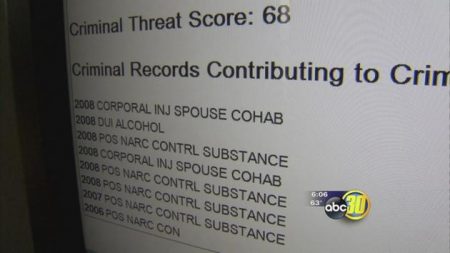September 17, 2016 – When the movie “Minority Report“ first screened it was seen as a dystopian fantasy. But the truth is predictive policing using data mining is with us now with algorithms, that is computer programs, developed that can see patterns the average security analyst or police person cannot. Back in 2014 two UCLA professors worked with the Los Angeles Police Department developing predictive algorithms to prevent crime. Their prior work had been with the U.S. Army creating software capable of flagging online behaviour that could lead to terrorist attacks. And in June of this year researchers at University of Miami were able to identify patterns in social media activity of Islamic State (ISIL) supporters to identify likely future behaviour. The Miami researchers took equations from physics and chemistry and applied them to online behaviour within social media. They discovered a pre-attack pattern with members within ISIL.
States Dr. Neil Johnson, one of the team leaders in the research, “It was like watching crystals forming. We were able to see how people were materializing around certain social groups. They were discussing and sharing information all in real-time.”
The research applied the formulae to Vkontakte, a Russian social network with more than 350 million users. They were able to identify pro-ISIL comments in many languages. They applied hashtags and indexed key words to identify 196 groups and 108,000 individuals with pro-ISIL views. Most of these people in self-organized groups never meet but as they watched some groups go quiet and then re-emerge, new identities were also hatched. This kind of behaviour suggests a build up to violence. For police and security using the algorithms created should be predictive tool for group violence and even one-off attacks referred to as “lone wolf” events. Dr. Johnson believes the evidence shows that lone wolves don’t remain alone for long, that they tend to associate with larger groups in time and their behaviour can be tracked through the “ecology” of the social medium.
Minority Report described a world in 2054 AD, a place and time when crime no longer existed because of a “Precrime” law enforcement capability. Pre-Cogs were gifted people capable of seeing the future and predicting a crime before it happens. Well now it appears in our reality of today that the human element may not be part of Precrime prediction.
University of Miami and UCLA don’t stand alone in doing this type of research. Predictive policing using threat scores to identify individual suspects is no longer a film fantasy. Enhanced situational awareness through comprehensive data mining of criminal databases and social media is changing policing.

New applications such as Beware, PredPol and Hitachi Visualization Predictive Crime Analytics (PCA) are now among the tools available to police departments in the name of enhancing public safety through predictive analytics. As Los Angeles Police Chief Charlie Beck states, “I’m not going to get more money. I’m not going to get more cops. I have to be better at using what I have, and that’s what predictive policing is about.”
The positives that can come out of this predictive capacity is the ability to use it for early engagement within a challenged community, not one focused on making arrests, but improving the life within problem urban and rural areas. These tools can help identify community service actions to improve social outcomes and behaviours. Thus bad things can be prevented from happening in the future.
It’s a little harder when dealing with something like ISIL because early intervention in an aggregated community online cannot be targeted through social intervention. But algorithms that prevent a terrorist attack whether by a single operative or group can help the international community organize and deliver preemptive measures that minimize future risks.









